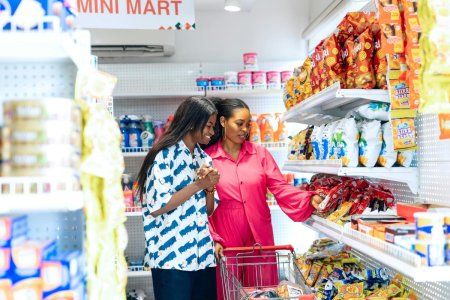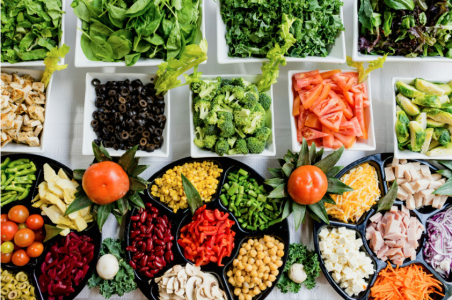The USDA’s latest move—how it could shake up your food habits and grocery list
By
Aubrey Razon
- Replies 3
Big changes could be coming to grocery shopping in America. A major program that helps millions might soon have new restrictions.
Could this affect what’s in your shopping cart?
The landscape of grocery shopping in America could be on the brink of a significant shift, especially for the over 40 million citizens who rely on the Supplemental Nutrition Assistance Program (SNAP).
The program, which provides essential support to low-income households, is facing potential changes that could impact what items are permissible for purchase.
At the helm of this potential transformation is the newly-appointed USDA Secretary, Brooke Rollins.
With a vision to promote healthier eating habits among Americans, Rollins is advocating for a reevaluation of the SNAP program's guidelines, particularly concerning the purchase of junk food items.
Before we delve into the proposed changes, let's understand what SNAP is and why it's crucial.
SNAP offers food benefits to low-income families, allowing them to purchase groceries and thereby ensuring that nutritional needs are met.
Recipients receive funds on a debit card, which can be used at participating grocery stores and farmers' markets.
The program is designed to support a balanced diet, covering items like fruits, vegetables, meat, fish, dairy, bread, cereals, and snacks.
However, there are restrictions. SNAP benefits cannot be used to buy alcohol, cigarettes, hot foods, or non-food items like cooking utensils.
The amount of assistance provided is based on various factors, including income, other benefits received, and household size.
Secretary Rollins' initiative is driven by a concern for the nutritional value of the food purchased with taxpayer dollars.
She questions whether it's appropriate for SNAP funds to be used for “really bad food and sugary drinks,” especially for children who need nutritious options.
This sentiment is echoed by Health and Human Services Secretary Robert F. Kennedy Jr., who has criticized the subsidization of unhealthy food choices through federal programs like SNAP and school lunches.
The proposed changes aim to encourage healthier eating habits by restricting the purchase of certain junk foods.
The road to implementing these changes is fraught with challenges.
SNAP is governed by the USDA but administered by individual states under the federal Food and Nutrition Act of 2008.
To enact purchase restrictions, Congress would need to amend this law, or states would have to obtain waivers—a process that has historically been met with resistance.
In the past, attempts by various states to restrict SNAP purchases of items like soft drinks and luxury meats have been unsuccessful.
The USDA has previously denied such requests, citing the difficulty in defining foods as “good or bad” and the complexity and cost of implementing such limitations.
Moreover, any new efforts to restrict SNAP purchases will likely face opposition from the food industry, which invests heavily in lobbying to protect its interests.
For the millions of Americans who rely on SNAP, these potential changes could significantly impact their shopping habits and food choices.
While the goal is to promote healthier diets, concerns remain about the accessibility and affordability of nutritious options for low-income individuals.
As discussions continue, staying informed is crucial to understanding how these policy changes may affect communities nationwide.
For those over 60, especially those on a fixed income or receiving SNAP benefits, maintaining access to a diverse range of food options is essential for well-being.
At The GrayVine, we’re dedicated to keeping you updated on policies that impact your daily life. Whether it’s changes in nutrition assistance or tips for smarter shopping, we’re here to help you navigate every step.

What are your thoughts on the proposed SNAP changes? Do you believe restricting junk food purchases is a step in the right direction, or do you have concerns about the potential impact on personal choice and food accessibility? Share your insights and experiences in the comments below.
Could this affect what’s in your shopping cart?
The landscape of grocery shopping in America could be on the brink of a significant shift, especially for the over 40 million citizens who rely on the Supplemental Nutrition Assistance Program (SNAP).
The program, which provides essential support to low-income households, is facing potential changes that could impact what items are permissible for purchase.
At the helm of this potential transformation is the newly-appointed USDA Secretary, Brooke Rollins.
With a vision to promote healthier eating habits among Americans, Rollins is advocating for a reevaluation of the SNAP program's guidelines, particularly concerning the purchase of junk food items.
Before we delve into the proposed changes, let's understand what SNAP is and why it's crucial.
SNAP offers food benefits to low-income families, allowing them to purchase groceries and thereby ensuring that nutritional needs are met.
Recipients receive funds on a debit card, which can be used at participating grocery stores and farmers' markets.
The program is designed to support a balanced diet, covering items like fruits, vegetables, meat, fish, dairy, bread, cereals, and snacks.
However, there are restrictions. SNAP benefits cannot be used to buy alcohol, cigarettes, hot foods, or non-food items like cooking utensils.
The amount of assistance provided is based on various factors, including income, other benefits received, and household size.
Secretary Rollins' initiative is driven by a concern for the nutritional value of the food purchased with taxpayer dollars.
She questions whether it's appropriate for SNAP funds to be used for “really bad food and sugary drinks,” especially for children who need nutritious options.
This sentiment is echoed by Health and Human Services Secretary Robert F. Kennedy Jr., who has criticized the subsidization of unhealthy food choices through federal programs like SNAP and school lunches.
The proposed changes aim to encourage healthier eating habits by restricting the purchase of certain junk foods.
The road to implementing these changes is fraught with challenges.
SNAP is governed by the USDA but administered by individual states under the federal Food and Nutrition Act of 2008.
To enact purchase restrictions, Congress would need to amend this law, or states would have to obtain waivers—a process that has historically been met with resistance.
In the past, attempts by various states to restrict SNAP purchases of items like soft drinks and luxury meats have been unsuccessful.
The USDA has previously denied such requests, citing the difficulty in defining foods as “good or bad” and the complexity and cost of implementing such limitations.
Moreover, any new efforts to restrict SNAP purchases will likely face opposition from the food industry, which invests heavily in lobbying to protect its interests.
For the millions of Americans who rely on SNAP, these potential changes could significantly impact their shopping habits and food choices.
While the goal is to promote healthier diets, concerns remain about the accessibility and affordability of nutritious options for low-income individuals.
As discussions continue, staying informed is crucial to understanding how these policy changes may affect communities nationwide.
For those over 60, especially those on a fixed income or receiving SNAP benefits, maintaining access to a diverse range of food options is essential for well-being.
At The GrayVine, we’re dedicated to keeping you updated on policies that impact your daily life. Whether it’s changes in nutrition assistance or tips for smarter shopping, we’re here to help you navigate every step.
Key Takeaways
- The new USDA chief, Brooke Rollins, aims to impose purchase restrictions on junk food for SNAP benefit users to encourage healthier eating habits.
- Currently, around 42.1 million Americans rely on SNAP benefits, and this move may affect their ability to purchase certain food items using these benefits.
- A number of bills have been previously introduced to limit the use of SNAP benefits on junk food, with varying degrees of success.
- Restricting certain foods from the SNAP program is complicated, as it requires changes to the law or state waivers, and has faced opposition from the food industry and the federal government.
Last edited:








